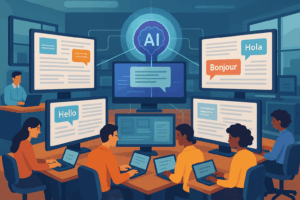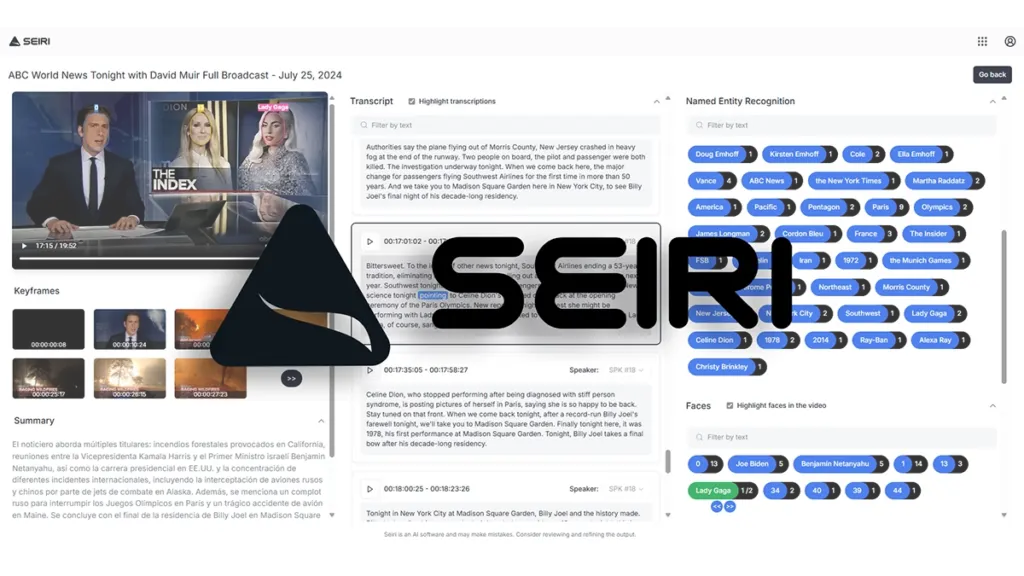In the communications and media sector, speed and accuracy in content translation are essential. Every minute counts when it comes to publishing news, articles, or interviews in multiple languages, and this is where AI-powered translation comes into play.
Today, I want to tell you how this technology is not only revolutionizing media work, but also offering a solution that combines speed, resource savings, and professional quality.
The translation revolution in the media
For years, the media has relied on human translators or basic programs that performed in a limited way. But with the advent of artificial intelligence, we have entered a new era where neural machine translation has raised quality and speed to unprecedented levels.
Today’s algorithms allow an AI translator to constantly learn from context, nuances, and style, ensuring much more natural results than older tools.
We are no longer talking about simple word-for-word substitutions, but rather a process where the overall meaning and intent of the author are faithfully preserved.
Why is an AI-powered translator key for the media?
The media works with high volumes of content on very tight deadlines. From breaking news to international reports, everything must be published in multiple languages almost simultaneously.
An AI-powered translator offers critical advantages:
- Speed of delivery: it can translate in seconds what used to take hours or days.
- Consistency of style: it maintains a uniform tone across all texts, which is vital for brand identity.
- Scalability: it is capable of translating large volumes of content without losing quality.
- Resource optimization: it frees up the human team to focus on strategic and supervisory tasks.
- Adaptation to different formats: from long articles to video subtitles, press releases, or internal newsletters.
In short, it becomes an indispensable ally for the media to remain competitive in an increasingly globalized digital environment.
How an artificial intelligence translator works
An artificial intelligence translator combines several layers of processing:
- Source text analysis: AI detects grammar, context, tone, and key expressions.
- Neural processing: models trained with millions of examples generate translation proposals.
- Semantic optimization: the result is adjusted to sound natural in the target language.
- Continuous learning: each correction or adjustment feeds back into the system, improving future translations.
Unlike traditional translators, which worked more literally, AI is able to adapt phrases, idiomatic expressions, and even the tone of communication.
This is especially useful in media, where style and clarity of message are essential.
Comparison: Traditional translator vs. intelligence translator
Many professionals still wonder whether it is really worth making the leap. The answer is clear: yes.
| Appearance | Traditional translator | Artificial intelligence translator |
| Speed | Slow, depending on the human team | Very high, instant translation |
| Internal costs | High for multilingual projects | Optimized thanks to automation |
| Quality | High but subject to long turnaround times | Very high with minimal revision |
| Scalability | Limited | Virtually unlimited |
| Consistency | Varies depending on the translator | Consistent across all content |
The difference is not only technical, it is also reflected in the reader’s experience, who finds the texts more understandable, fluid, and appealing.
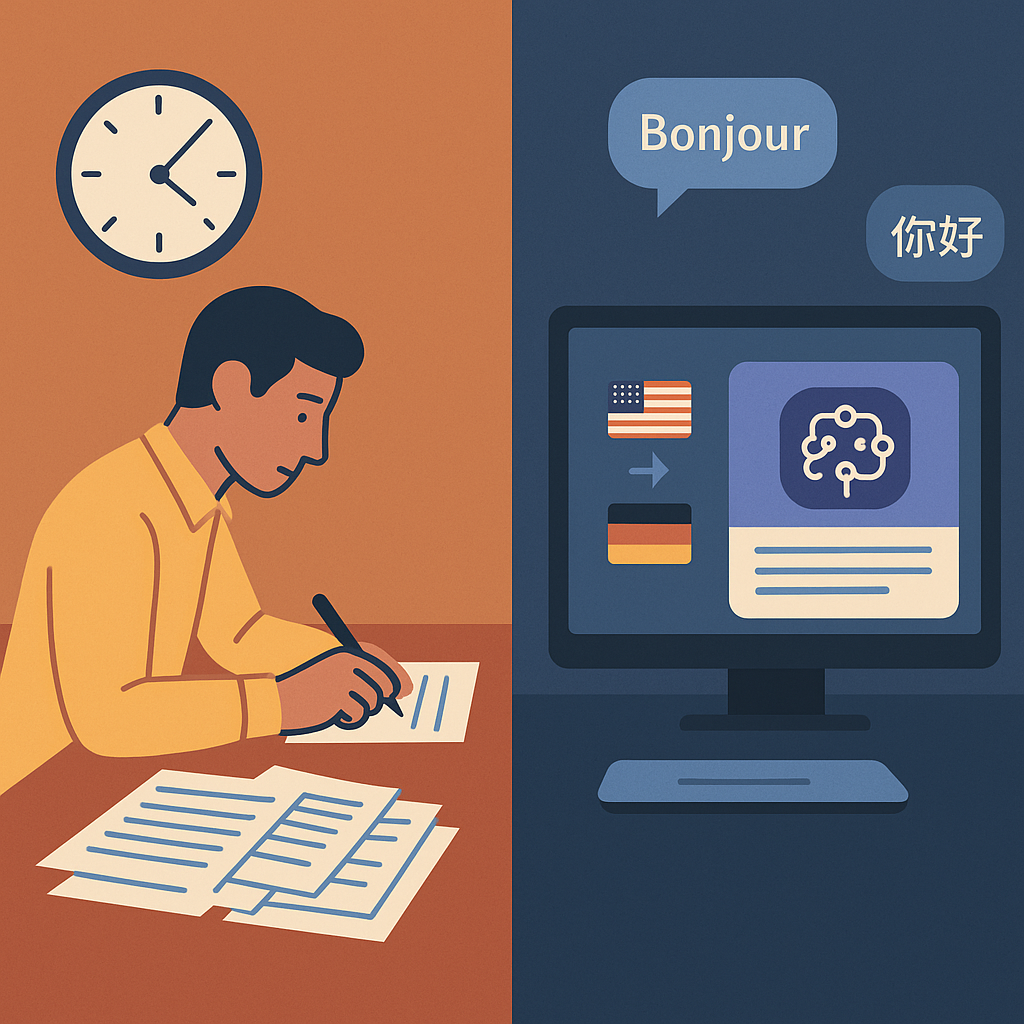
Real-world use cases in media
The power of an AI-powered translator can be seen in specific situations:
- International news: an online newspaper can translate a news agency report in minutes and publish it in multiple languages without delay.
- Real-time subtitles: television interviews and streaming broadcasts can be made accessible to global audiences.
- Digital magazines: long reports can be adapted to multiple markets without duplicating efforts.
- Internal newsletters: large media groups distribute multilingual internal communications consistently.
The key is that AI is integrated into production processes and does not interrupt workflows, but rather speeds them up.
The role of human translators alongside artificial intelligence
Although AI has made great strides, it is still advisable to have human translators supervise the work, especially in specialized texts or those where cultural nuances are key.
The best formula for the media is usually a hybrid model: AI performs the first translation, quickly and accurately, and the human team adjusts the final details.
This way, you get the best of both worlds: speed + editorial quality.
Direct benefits for media outlets
Integrating an AI-powered translator brings tangible benefits:
- Increased productivity: your team can manage more content in less time.
- Access to international audiences: texts can be adapted into multiple languages without barriers.
- Savings in internal resources: repetitive tasks are reduced and organization is optimized.
- Improved reputation: the image of a modern and global media outlet is reinforced.
- Information security: many systems offer private and encrypted environments to protect sensitive data.
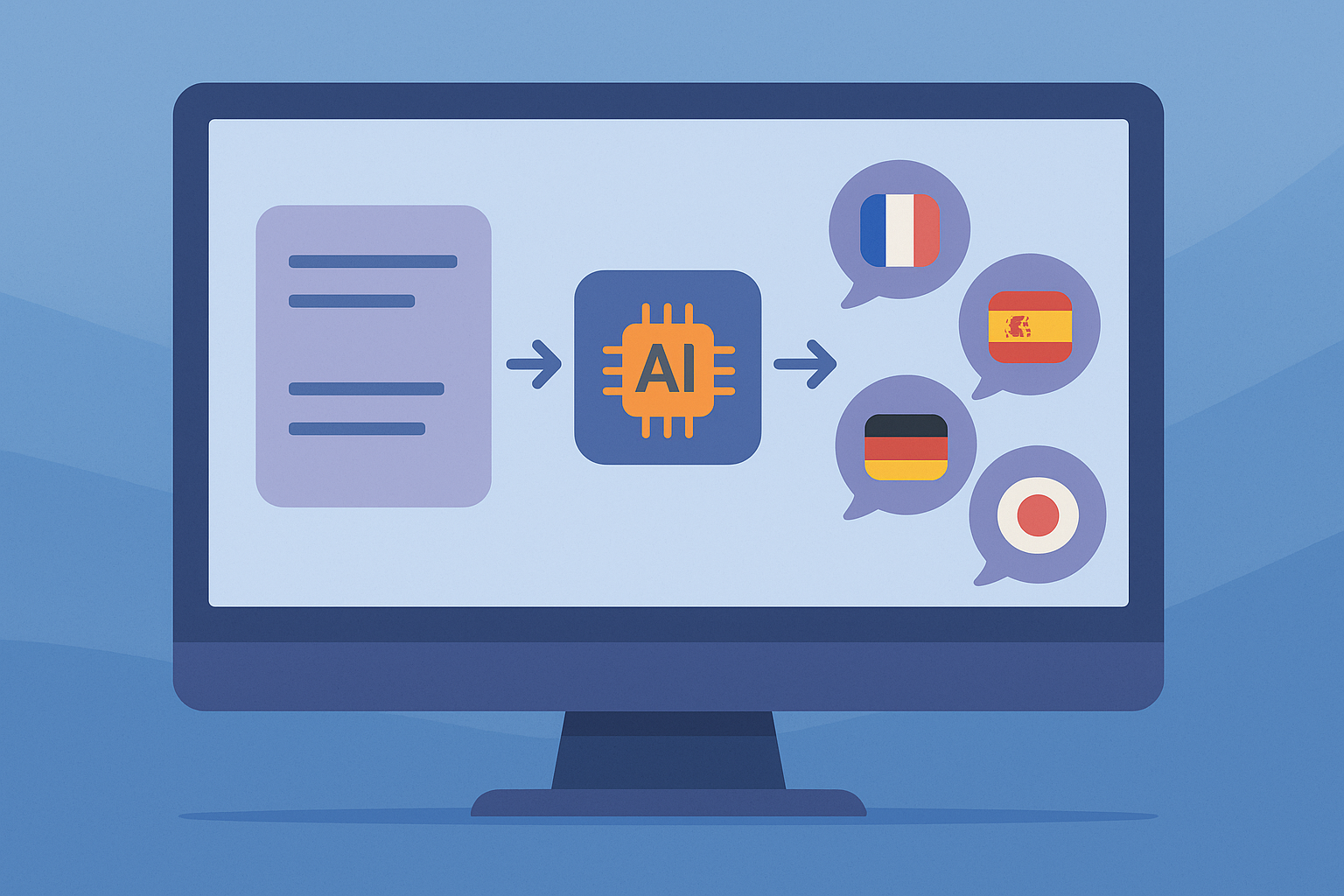
Artificial intelligence and multilingual SEO
Translation alone is not enough; content must also be optimized for search engines in each language.
So AI has the ability to:
- Adapt titles and meta descriptions to the local language.
- Detect keyword equivalents in each market.
- Adjust content structures to improve international positioning.
This means that an article translated with artificial intelligence will not only be more readable, but will also have greater visibility on Google and other international search engines.
👉 Discover how Amplify boosts your content with artificial intelligence solutions designed for global growth.
The constant evolution of the AI translator
One of the greatest strengths of this technology is its ability to continuously learn. Every new translation, every correction, and every interaction improves its performance.
Thanks to this process, media outlets that integrate AI into their systems obtain a tool that not only solves current problems, but also adapts and improves over time.
This ensures that the investment does not become obsolete, but rather evolves with the needs of the sector.
Current challenges in artificial intelligence translation
Although the advances are impressive, challenges remain:
- Cultural nuances: local expressions that require human supervision.
- Minority languages: less data available for training models.
- Creative translation: human intervention is still needed in literary or advertising genres.
- Sensitive contexts: such as legal or medical texts, where accuracy must be absolute.
Even so, the constant evolution of models shows that these obstacles are becoming less and less significant.
Future trends in translation with artificial intelligence
The future points to a fully automated environment, where artificial intelligence translators will be integrated into content management systems, live broadcasts, and even virtual assistants.
Among the main trends are:
- Real-time translation during interviews or conferences.
- Automatic adaptation to linguistic registers (formal, colloquial, technical).
- Integration with voice technology to generate multilingual audio.
- Training of customized models for each medium.
This opens up a new era in which the media will be able to expand without borders, with more agile and efficient processes.
How to start implementing an AI-powered translator
Taking the plunge doesn’t have to be complicated. At Amplify, we accompany media outlets throughout the entire process:
- Needs analysis: we identify where AI can add the most value.
- Technology integration: we connect the translator to the media outlet’s systems.
- Team training: we teach how to use the tool strategically.
- Monitoring and improvements: we continuously adjust based on the results.
However, the goal is not only to translate faster, but also to do so with the quality that the audience expects.
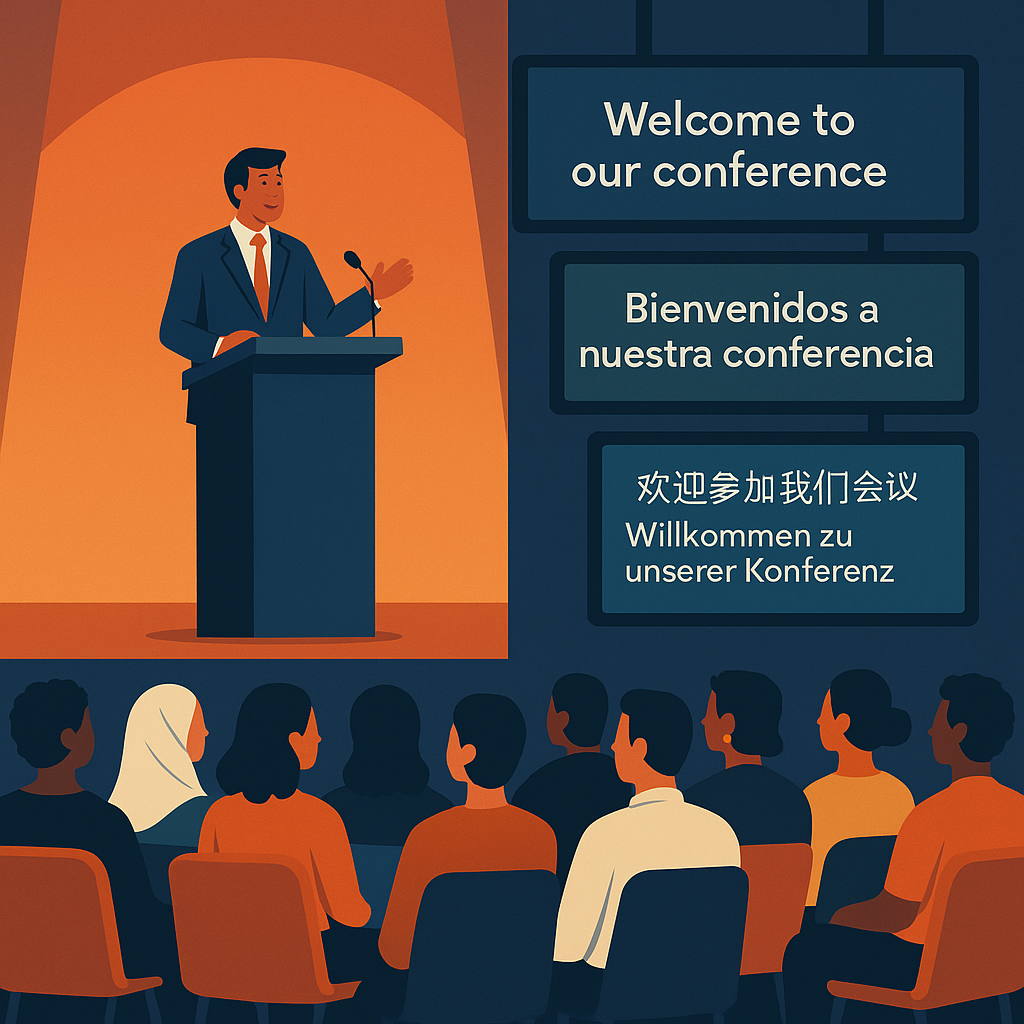
Conclusion: The essential ally for modern media
In a globalized and digital world, having an AI-powered translator is no longer an option, but a necessity for media outlets that want to grow and remain competitive.
Thanks to this technology, it is possible to reach a global audience quickly, cost-effectively, and with high quality, without compromising the essence of the message.
If you want to take your content to the next level, I invite you to learn more about our solutions at Amplify and discover how we can help you expand your international impact.
👉 Ready to take the first step? Contact us and let’s start building a smart translation strategy for your media outlet together.
👉 For more information on machine translation: https://aws.amazon.com/es/what-is/machine-translation/
